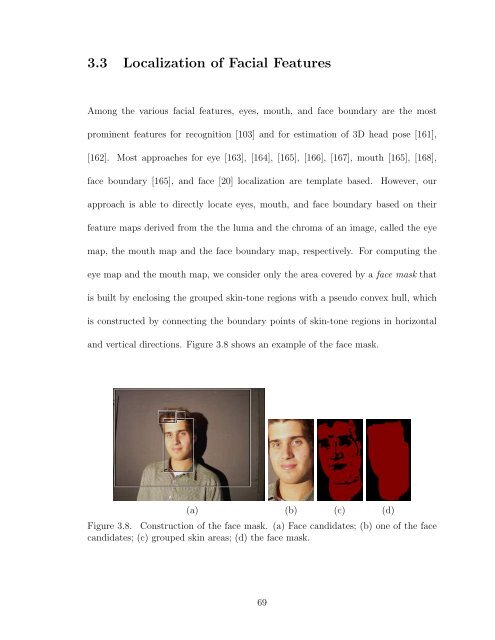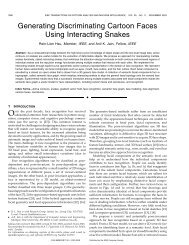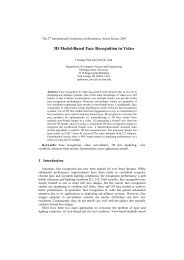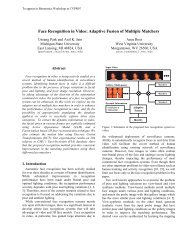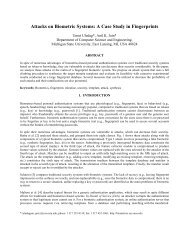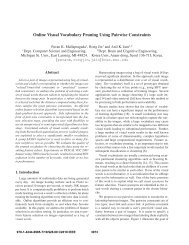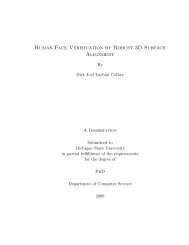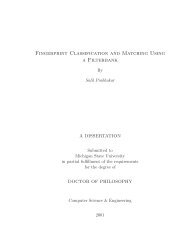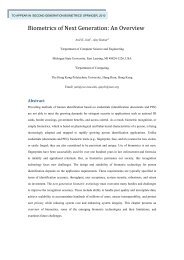Face Detection and Modeling for Recognition - Biometrics Research ...
Face Detection and Modeling for Recognition - Biometrics Research ...
Face Detection and Modeling for Recognition - Biometrics Research ...
Create successful ePaper yourself
Turn your PDF publications into a flip-book with our unique Google optimized e-Paper software.
3.3 Localization of Facial Features<br />
Among the various facial features, eyes, mouth, <strong>and</strong> face boundary are the most<br />
prominent features <strong>for</strong> recognition [103] <strong>and</strong> <strong>for</strong> estimation of 3D head pose [161],<br />
[162]. Most approaches <strong>for</strong> eye [163], [164], [165], [166], [167], mouth [165], [168],<br />
face boundary [165], <strong>and</strong> face [20] localization are template based.<br />
However, our<br />
approach is able to directly locate eyes, mouth, <strong>and</strong> face boundary based on their<br />
feature maps derived from the the luma <strong>and</strong> the chroma of an image, called the eye<br />
map, the mouth map <strong>and</strong> the face boundary map, respectively. For computing the<br />
eye map <strong>and</strong> the mouth map, we consider only the area covered by a face mask that<br />
is built by enclosing the grouped skin-tone regions with a pseudo convex hull, which<br />
is constructed by connecting the boundary points of skin-tone regions in horizontal<br />
<strong>and</strong> vertical directions. Figure 3.8 shows an example of the face mask.<br />
(a) (b) (c) (d)<br />
Figure 3.8. Construction of the face mask. (a) <strong>Face</strong> c<strong>and</strong>idates; (b) one of the face<br />
c<strong>and</strong>idates; (c) grouped skin areas; (d) the face mask.<br />
69


